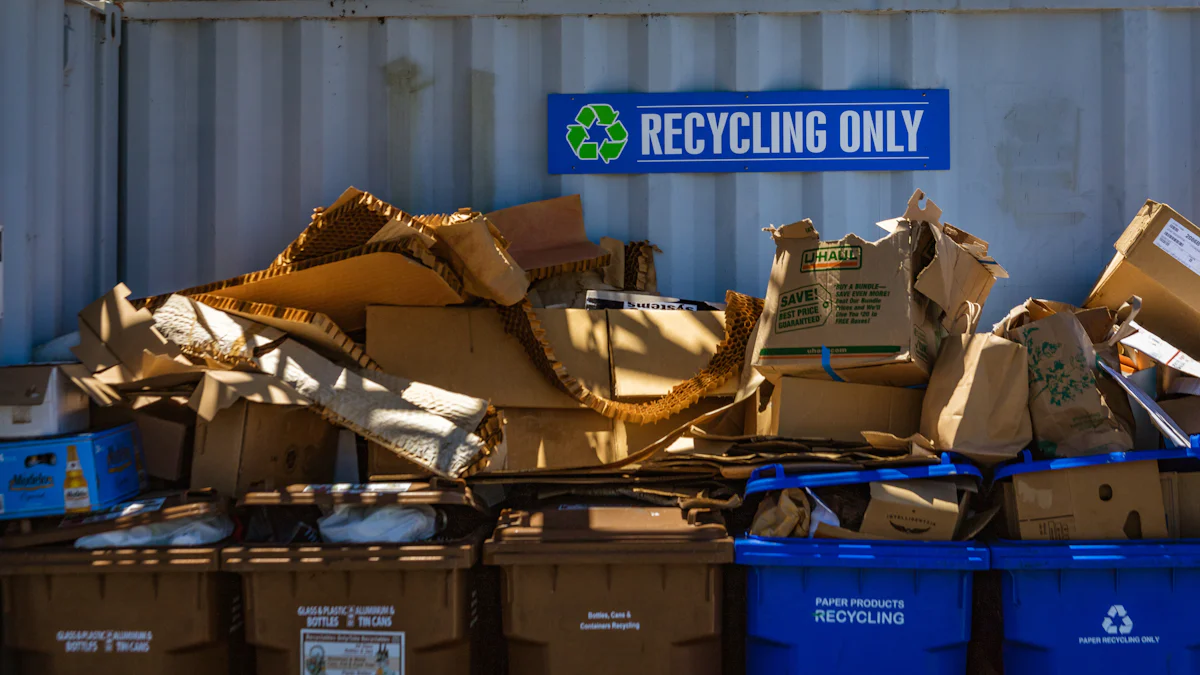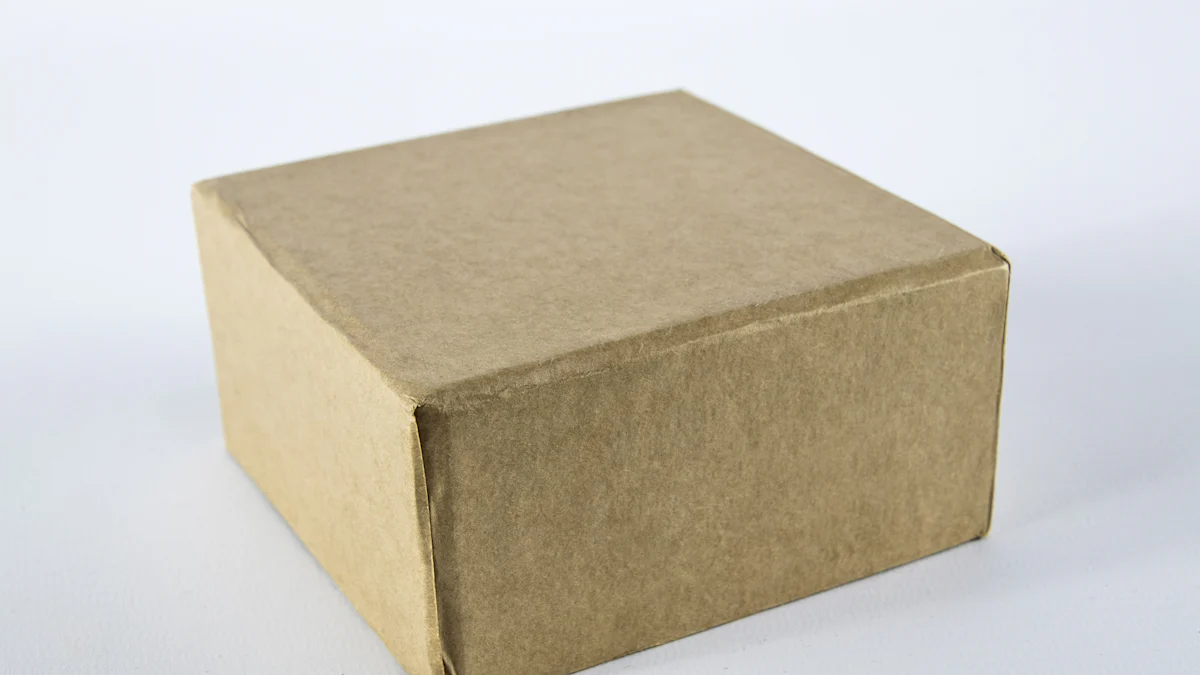
Cardboard beds have become a notable feature at the Olympics. These eco-friendly sleeping arrangements first appeared at the Tokyo 2020 Games. The use of cardboard beds has sparked widespread curiosity and discussions among athletes and spectators. Many people question their durability and comfort. However, these beds represent a significant step toward sustainability in large-scale events. Understanding the reasons behind their adoption reveals a deeper commitment to environmental responsibility.
The Origin of Cardboard Beds
The First Appearance
Which Olympics introduced them
The Tokyo 2020 Olympics marked the debut of cardboard beds. Organizers aimed to promote sustainability through innovative solutions. The beds featured reinforced cardboard frames and customizable mattresses. This design supported up to 440 pounds, demonstrating sturdiness.
Initial reactions and media coverage
Initial reactions to the cardboard beds included skepticism and humor. Many questioned the durability and comfort of these eco-friendly beds. Media coverage highlighted the novelty and environmental benefits. Athletes shared mixed opinions on social media, adding to the discussions.
The Idea Behind Cardboard Beds
Sustainability goals
Cardboard beds align with the Olympics’ sustainability goals. The materials used are fully recyclable. This reduces waste and supports eco-friendly practices. The initiative aims to minimize the carbon footprint of the games.
Practicality and cost-effectiveness
The practicality of cardboard beds extends beyond sustainability. These beds are cost-effective compared to traditional options. The lightweight design simplifies transportation and assembly. This efficiency benefits both organizers and athletes.
Environmental Impact of Cardboard Beds

Eco-Friendly Materials
Composition of the beds
Cardboard beds used at the Olympics consist of reinforced cardboard frames. These frames provide a sturdy base for athletes. The mattresses often incorporate recycled materials, including fishing nets. This combination ensures both durability and comfort. The use of eco-friendly materials aligns with the sustainability goals of the Olympics.
Recycling process post-Olympics
After the games, organizers recycle the cardboard beds. The recycling process involves breaking down the cardboard into raw materials. These materials then re-enter the production cycle. This approach minimizes waste and promotes a circular economy. Donating the beds to national organizations further prevents landfill waste.
Reducing Carbon Footprint
Comparison with traditional beds
Traditional beds often use non-recyclable materials. These materials include metals and plastics. Manufacturing these beds generates a significant carbon footprint. In contrast, cardboard beds offer a more sustainable alternative. The production of cardboard beds requires fewer resources. This reduces the overall environmental impact.
Long-term environmental benefits
The long-term benefits of using cardboard beds extend beyond the Olympic Games. These beds contribute to a reduction in landfill waste. The recyclable nature of the materials supports ongoing sustainability efforts. Cardboard beds also encourage other large-scale events to adopt eco-friendly practices. This shift can lead to broader environmental improvements.
Practicality and Design of Cardboard Beds

Durability and Comfort
Testing and feedback from athletes
Cardboard beds have undergone extensive testing to ensure durability. Athletes like Evy Leibfarth have shared experiences about the sturdiness of these beds. Despite rumors, athletes tested the beds’ strength and found them reliable. The reinforced cardboard frames can support up to 440 pounds. This demonstrates the robustness of the design.
Comfort remains a critical factor for athletes. Some athletes, including Kearns, reported that the beds felt “rock hard” even on the softer side. To address comfort concerns, many athletes purchased mattress covers. These additions helped improve sleep quality. Dr. Funke Brown discussed how sleep quality impacts performance. Athletes prioritize comfort to ensure optimal rest before competitions.
Design features that ensure comfort
The design of cardboard beds includes several features aimed at ensuring comfort. The customizable mattresses play a significant role. These mattresses often incorporate recycled materials, such as fishing nets. This combination provides both support and comfort. The lightweight nature of the materials also contributes to ease of use.
Athletes appreciate the eco-friendly aspect of the beds. However, the focus remains on comfort over technology. The beds’ design balances sustainability with the need for restful sleep. The feedback from athletes helps refine the design for future events.
Assembly and Disassembly
Ease of setup and takedown
Cardboard beds offer practical benefits in terms of assembly and disassembly. The lightweight design simplifies the setup process. Organizers can quickly assemble and disassemble the beds. This efficiency proves beneficial during large-scale events like the Olympics.
The beds’ modular design allows for easy transportation. The components can be flat-packed, reducing space requirements. This feature makes logistics more manageable for event organizers. The simplicity of the design ensures that anyone can set up the beds without specialized tools.
Logistics of transporting and storing the beds
Transporting and storing cardboard beds involves minimal logistical challenges. The flat-pack design reduces the volume needed for shipping. This efficiency lowers transportation costs and environmental impact. The beds’ lightweight nature further simplifies handling.
Post-Olympics, the beds can be easily stored or recycled. The recycling process involves breaking down the cardboard into raw materials. These materials re-enter the production cycle, promoting a circular economy. Donating the beds to national organizations prevents landfill waste. This approach aligns with the sustainability goals of the Olympics.
Public Perception and Misconceptions
Media Coverage and Public Opinion
Initial skepticism and humor
Cardboard beds at the Olympics have generated significant media coverage. Many athletes and spectators initially responded with skepticism and humor. Some news outlets claimed that cardboard beds were flimsy and designed to prevent intimacy among athletes. American track and field runner Paul Chelimo fueled these rumors by suggesting the beds aimed to avoid intimacy. However, Irish Olympic gymnast Rhys McClenaghan debunked this myth by jumping on the beds to test their sturdiness. Despite initial doubts, the beds proved to be more durable than expected.
Positive feedback and acceptance
Positive feedback emerged as athletes began using the cardboard beds. Many athletes appreciated the eco-friendly initiative. The beds’ ability to support up to 440 pounds impressed many users. Reports highlighted the environmental benefits of using recyclable materials. Athletes shared their experiences on social media, showcasing the beds’ comfort and durability. The positive reception helped shift public opinion, leading to broader acceptance of the cardboard beds.
Addressing Common Misconceptions
Myths about durability and comfort
Several myths about cardboard beds persist. Many people believe cardboard beds lack durability. However, the reinforced cardboard frames can support substantial weight. Athletes tested the beds and confirmed their strength. Concerns about comfort also arose. Some athletes initially found the beds uncomfortable. However, customizable mattresses and additional mattress covers improved sleep quality. These features ensured that athletes received adequate rest.
Clarifying the purpose and benefits
The primary purpose of cardboard beds is sustainability. The beds align with the Olympics’ commitment to reducing environmental impact. Using recyclable materials minimizes waste and supports a circular economy. Cardboard beds offer a cost-effective and practical solution for large-scale events. The lightweight design simplifies transportation and assembly. The initiative encourages other events to adopt eco-friendly practices. The long-term benefits include reduced landfill waste and a lower carbon footprint.
Cardboard beds have revolutionized the Olympic Village by promoting sustainability. These beds, made from reinforced cardboard, offer durability and comfort. The use of recyclable materials aligns with the Olympics’ environmental goals. Athletes have tested these beds and confirmed their reliability. The design ensures spinal alignment and pressure point support, enhancing sleep quality. The future of eco-friendly initiatives at the Olympics looks promising. Cardboard beds set a precedent for sustainable practices in large-scale events. The commitment to reducing waste and carbon footprint continues to grow.
 Press Coffee
Press Coffee